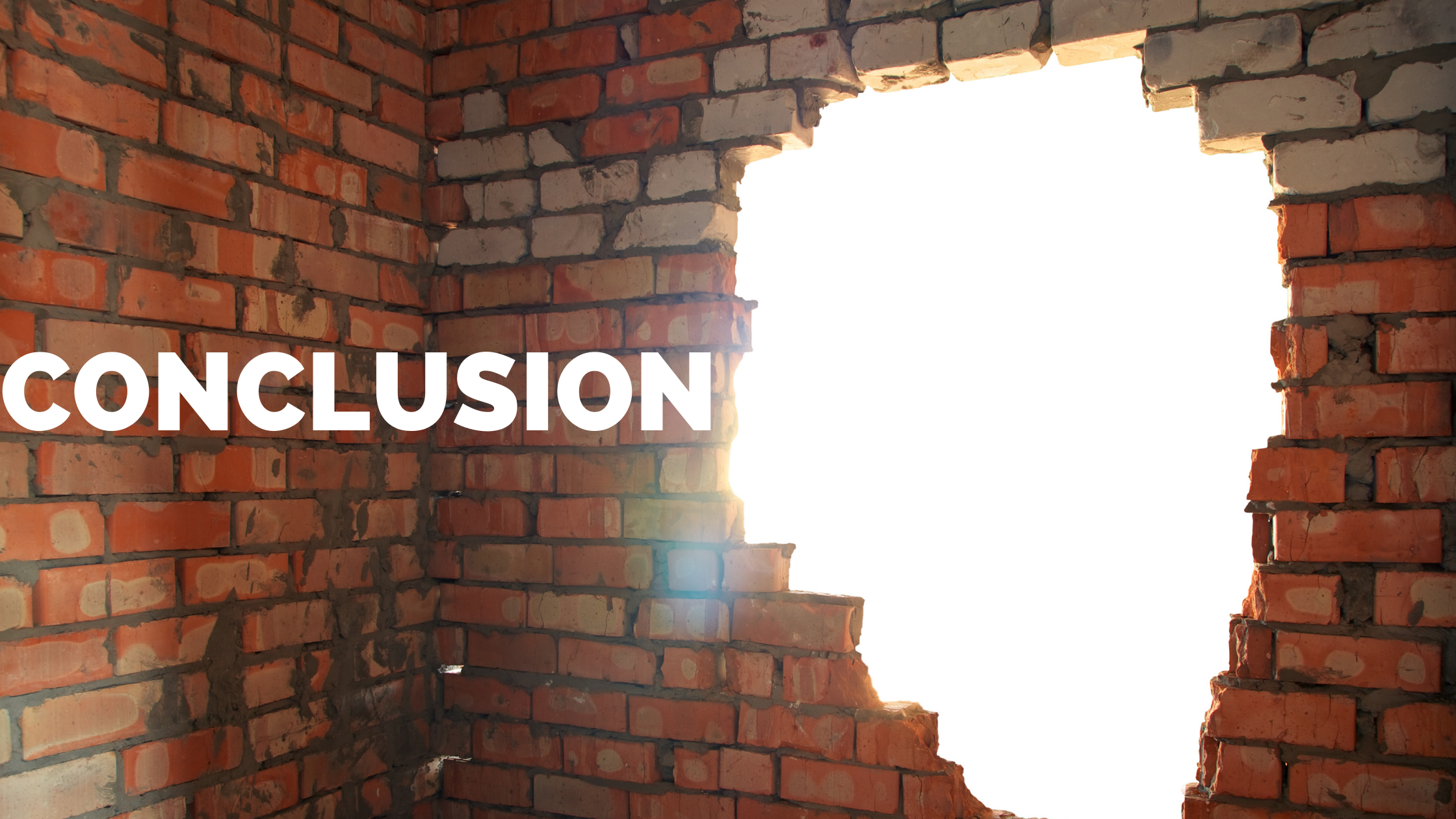If you're reading this then most likely you've experienced failed marketing.
Whether it's the result of your own efforts or someone else you've paid, it's frustrating (and sometimes expensive) to be left with poor results and no solid reason why.
There are a ton of external forces one can blame for poor marketing results -- weird weather, public uncertainty, a stiff competitor -- are just a few, but the blame list can be infinite!
And while external forces do play a legitimate role in your marketing results, only looking at those things will leave you up against the wall time and time again.
They leave you no clear path for how to improve your efforts, so that next time, you can make informed decisions that do get you BETTER marketing results.
So let me ask you a question:
Wouldn't it feel better to back your marketing "guesses" with a framework that allows you to make more educated moves that result in more return?
I think all of us would answer that with an enthusiastic "YES!"
So why is it that so much marketing fails?
It's because the customer journey in its entirety is never considered in the overall marketing strategy.
And because the full picture isn't accounted for, countless qualified leads end up hitting a dead end in their path to purchase, never to be revived.
Okay, okay, maybe that's a little dramatic, but it is also TRUE.
Too many qualified leads slip through the cracks never to return simply because their goals or action (and inaction) wasn't taken into consideration.
That's because potential and actual customers are a broad, varied group -- they have different needs, goals, and behavioral patterns.
And it's finding a way to engage with all of those variances in an effective, intelligent way that builds relationships that translate to loyal customers.
And it was this exact issue that led me to create my agency's proprietary process, the Marketing RAMP®, which is designed to address all of those real customer needs and goals and behavioral patterns.
But I'm getting ahead of myself...
Before we talk about the solution (which you will learn how to implement yourself in this article!), we first need to look in a little more detail at why so many business owners and marketers continue to hit a wall with their marketing efforts
Want hands-on marketing help? Click the button below to schedule your free consult and get your questions answered.
Each Marketing Campaign You Launch is an Island
This is quite common.
Consider the last time you had a product launch or webinar or other event that you wanted to drive prospects to in the hope that they would buy, opt-in, sign up -- CONVERT.
Most likely you and your team put together all the pieces of the landing page, emails, ad copy, the works! Or, maybe you hired a marketing agency to do it for you.
You had your special event, flash sale or webinar, and....
And, as per usual, some or a few took the action you wanted them to take, most did not.
Perhaps you felt pretty good about the new customers who converted! As you should be!
But...what about the prospects who didn't convert?
Did you consider them lost forever?
The thing is, there are TONS of qualified prospects out there who won't convert THIS TIME simply because the timing isn't right for them, or because they were actually looking for a different product or service (that you also sell, but they don't know that!)
They are primed to be loyal customers, if you can just meet them where they are.
And that's why:
In the world of marketing that gets results, no action can be an island.
There will always be multiple pathways to purchase.
Let me say that again (and with feeling!): THERE WILL ALWAYS BE MULTIPLE PATHWAYS TO PURCHASE.
And anytime you market anything without taking those multiple pathways into account, you’re guaranteed to lose many hard-earned prospects who were primed to be loyal customers and raving fans!
But before I explain how you can account for all those multiple pathways for consistent marketing results, I need to address the other wall standing in our way.
You Don't Account for Real Human Behavior
The typical marketing and sales funnel follows a linear path, which doesn't address how REAL humans actually think, behave, and buy.
One thing is for sure, shoving prospects down one path towards a sale doesn't work.
Let me illustrate with my own example.
Before I created the Marketing RAMP®, for many years I was using its precursor. Something I created called "The Core Funnel."
The Core Funnel was a powerful marketing strategy designed around different customer pain points, and then it would segment them based off of that pain point.
It was a simple but powerful approach, because from the get-go it asked what the prospect was interested in and then would provide messaging and offers based off of their answer.
And as the prospect moved through the Core Funnel they would be hit with a sale of some kind or presented with another action, like scheduling a consult.
And then, whether or not they bought, every prospect would go into the next stage, which I called "Indoctrination."
The Indoctrination stage of the Core Funnel dripped out value-heavy content, such as relevant advice, tips and testimonials, over the span of a month or so. It wasn't pushy and it added value, which are all great things! But there was a problem.
Once a prospect got through Indoctrination...
Then, that was it. That's where The Core Funnel concept stopped.
Anyone who purchased or didn't purchase was the same -- they were dumped into my long-term nurture. They would continue to receive content, but they never really got to engage with my brand in any meaningful way.
And I noticed that I would have successful sales, but I would also see thousands of leads go nowhere.
Talk about hitting a wall!
That's because the vast majority of sales and marketing funnels are based on assumptions about human behavior that are flat-out inaccurate.
Conversations must be based on your prospect's ACTUAL actions, not just how we WANT them to behave.
And that's how I came about creating my proprietary process, the Marketing RAMP®, which consists of micro-funnels designed to address real human behavior at EVERY point of their customer journey.
So, rather than one big funnel where we keep trying to push an offer down a linear path, the Marketing RAMP® consists of several highly targeted funnels designed to deliver specific value based on what the prospect is actually doing.
And today, I'm going to walk you through how you can use it to map your customer's journey in such a way that you more deeply engage with leads and prospects to maximize revenue and drive growth!
Want help getting better marketing results? Schedule a free consult with me to discover what walls I can help you break through.
How to Get Better Marketing Results
Get the Big Picture View of the Customer Journey to Prevent Marketing "Islands"
In order to get better marketing results, you first need to take a step back and look at the big picture.
Because it's the big picture -- your 30,000-foot view -- that gives you an actual map of the landscape. And only then can you begin to break down your customer journey into stages (or micro-funnels) that allows for better connection.
In the model I created, I break the average Customer Journey down into 10 stages. Over time, I found that the majority of the time, no matter what industry or company, you can typically condense the customer experience down into 10 meaningful stages.
Below is a general, but solid example of the 10 stages involved in someone going from prospect to raving fan.
NEW LEAD
SEGMENTATION
EDUCATE/INDOCTRINATE
DISCOVERY CALL/CONSULT/PROPOSAL
QUALIFIED/NOT QUALIFIED
NEEDS MORE TIME
PURCHASE/ONBOARDING
FULFILLMENT/CUSTOMER DELIGHT
TESTIMONIAL/REQUEST FOR REFERRAL
LONG TERM NURTURE
Remember, the Customer Journey is dynamic, so the stages of the journey do not necessarily move in a linear progression.
Here are 3 examples to show you the dynamism of this approach.
EXAMPLE 1:
An eager prospect comes in at Stage 1 (New Lead), but goes right to Stage 4 (Discovery Call) or even Stage 7 (Purchase!). For many business owners, this is the dream: a new lead comes in and is immediately converted! Seldom is it reality. Especially if you sell high-ticket products or high-level services, typically much more has to happen...but not always.
EXAMPLE 2:
A prospect comes in at Stage 1 after downloading a free resource. They go through Stages 2 (Segmentation) and in doing so it is discovered they are an unqualified lead -- perhaps you don't sell what they're looking for, or they're located in a part of the world you don't serve.
Either way, the prospect will move into Stage 5 (Unqualified), where that micro-funnel will determine where they go next. Perhaps it is Stage 10 (Long-term Nurture. Or perhaps it ends up being Stage 6 (Needs More Time). It depends on each individual.
EXAMPLE 3:
A lead enters your world at Stage 1 and they don't take action. They are moved through Stages 2 and 3 and then, finally, they schedule a discovery call. But, during that call (Stage 4), you find out that they need more time, so they're sent to Stage 6 (Needs More Time). Perhaps after a few weeks of thinking and receiving relevant communications and touchstones from your team during this Stage 6 micro funnel, they eventually go back to Stage 4 (Discovery Call), and then onto Stage 7 (Purchase/Onboarding) and Stage 8 (Customer Delight).
Important to note: customers and prospects may enter, exit, and re-enter stages multiple times.
The stages, like the many paths to purchase, are dynamic and changeable, not a straight line.
Likewise, the stages you use for your customer journey should reflect real buying behaviors.
Want FREE Access to More Marketing Resources?
Map the Stages of the Customer Journey Based on Their Real Needs and Desires
Mapping the Customer Journey is where we dive into the details of each stage.
It's the process of defining the steps that a client will go through on their non-linear pathway to purchase.
Each stage drives the prospect towards a specific goal -- but it's not necessarily a sale. Remember, to get powerful marketing results you need to be able to deliver specific value based on your customers wants and needs.
In order to do that, you must be able to design each stage in a way that engages them and moves them toward their goals, which are ideally in alignment with yours.
Defining customer goals and then designing each stage around them is essential in improving the customer experience at each level.
But how do you find out what those goals are?
You ask them.
A fantastic way to do that is through segmentation, which is one of the benefits of the Core Funnel that lives on! When appropriate, I continue to use this strategy for many clients. Often as one of the earlier stages in "Mapping the Customer Journey." In the example above it is Stage 2.
That's because segmentation serves two purposes.
First, it engages the prospect. It asks them what they're interested in, or what they're looking for so that you can deliver the solutions they need.
Second, it qualifies the prospect. By asking certain questions, you can determine if you want to, or can, serve them. It can help sift qualified leads from duds immediately.
In the Segmentation strategy, you speak to the prospect about what they want. You want to always ask more than you assume.
For example:
Say you are a personal trainer who specializes in pain relief and injury recovery.
On your website, you offer a free lead magnet that provides "10 Ways to Alleviate Back and Neck Pain."
After delivering the lead magnet (Stage 1, using the example above), your Stage 2 (Segmentation) could start with asking the prospect what they're looking for as far as resources go, and could include answers like the ones below:
- I'd like to reduce the amount of joint pain I'm feeling.
- I suffer from tightness and stiffness.
- I'd like to improve my overall flexibility and strength.
Depending on how the prospect answers, they will receive highly relevant messaging about whatever they chose.
So, someone who selected #1 "I'd like to reduce the amount of joint pain I'm feeling," might receive an email that specifically addresses the challenges of joint pain, and includes a few tips to help them alleviate their suffering.
A second follow-up email could include a testimonial or other social proof about your services or a particular program you offer SOLVED joint pain issues for someone else, and then end with a call-to-action to schedule a free appointment or consult.
Now put yourself in the prospect's shoes.
Imagine signing up for a gym's newsletter or free e-book and then a few emails later they send you a short-and-sweet message asking what your specific need is. And then, once you answer, they follow up by sending you hyper-relevant info about how to solve that issue. How would that feel?
I bet it would feel pretty refreshing.
The whole point of mapping the customer journey in this way is to engage in a conversation with our customers, NOT just try to sell them. That is one sure-fire way to end a potentially fruitful relationship!
Now, the real beauty of this strategy is that we ALWAYS address the "what-ifs..."
So, WHAT IF the prospect just doesn't answer the question?
That's why we always want to be sure to include an option that is a "catch-all" for those who don't answer. For this example, it is number 3 which is broad enough to act as a default.
I hope this example has shown how critical segmentation categories can be. They work the best and are even more powerful when they are based on the definition of your Ideal Buyers. To learn more about how to define your Ideal Buyer, click here to read a previous article where I provide training in creating a "marketing blueprint." STEP 1 will give you the need-to-know info to get started!
Another way to map your customer journey based on their actual needs and desires is to "design with delight," which I'll cover below in the final section.
To be Even MORE Human, Design for Delight
Remember, the "old school" linear sales funnels focus on transactions.
They aren't interested in the customer's experience. A linear sales funnel treats customers like a commodity, but we must remember they are not -- they are human beings.
In the Marketing RAMP® approach, we include an entire stage (or, if not an entire stage, a portion of one stage) that is specifically aimed to surprise and delight.
Why?
Because for most of us, we have some degree of remorse immediately after a buying decision is made -- especially if it's a high-dollar item.
I'll be honest, the last time I bought a vehicle I spent months researching the best one for me. By the time it came to make my purchase, I had COMPLETE CONFIDENCE I was making the best decision for me.
But then, after the initial elation faded away...I thought, "I've made a huge mistake."
All of a sudden, I thought I spent too much, got the wrong model, acted too impulsively. Whatever post-purchase doubts exist, you name it, I experienced it!
Perhaps you've noticed that yourself.
The intelligent marketer and business owner understands buyer's remorse is a natural human tendency.
This is why the Marketing RAMP® includes a solution to continue delivering customer delight well after the purchase, known as "Infuse Points of Delight."
Using the example above, say that a prospect became a customer by buying a 9-month Strength and Mobility program. A program that isn't cheap and that includes a fair amount of time investment.
One way to quell any doubts and make them feel GOOD about their purchase is to follow up with a celebratory email that thanks them for signing up and provides affirmations about why they've made a great decision.
It could include a short video from you congratulating them on the positive step they've taken to take control of their health. The email could also include a strong testimonial from someone who took the same program and experienced an amazing transformation or a link to a Case Study showing statistics or hard data.
Another great approach to delight is to send a welcome gift.
For this example, perhaps it is a welcome card plus a branded exercise band, water bottle and towel. Or maybe it's something as simple as an email with a bonus PDF.
The point is, delighting customers doesn't have to be a HUGE thing. But it should be "a thing."
You'll be surprised how the smallest effort to delight your customers can deepen relationships and multiply raving fans.
There is a way through the walls of failed marketing results, and it's through intelligent mapping of the customer journey.
By following the steps above -- looking at the entire customer journey from the top-down and then digging deep into each stage to design an experience that is based on REAL HUMAN behaviors -- you WILL see better marketing results.
Creating a marketing strategy based on your customers' real expectations also makes it much easier to create content your prospects want to engage with. And to them, it will seldom, if ever, feel like they're getting "sold to."
Instead, to them, it should feel like a burgeoning relationship in which their expectations are met with relevant solutions.
And, most importantly, thanks to this Marketing RAMP® strategy, you'll know exactly what is going on with them, allowing you to make informed optimizations that give you better and better marketing results.
Stay tuned next month when I show you how to make this approach even more powerful by implementing "Ideal Duration" into every marketing campaign.
And if you're curious about how the Marketing RAMP® strategy could be applied to your business for better marketing results, schedule a consult with me to learn more.
My team and I can help you craft the overarching strategy, and, if needed, we can do all the work for you including the marketing automation, copywriting, asset design and more.
In the meantime, if you want instant access to tons of free marketing resources and training courses, don't forget to sign up for our free learning center below.

























